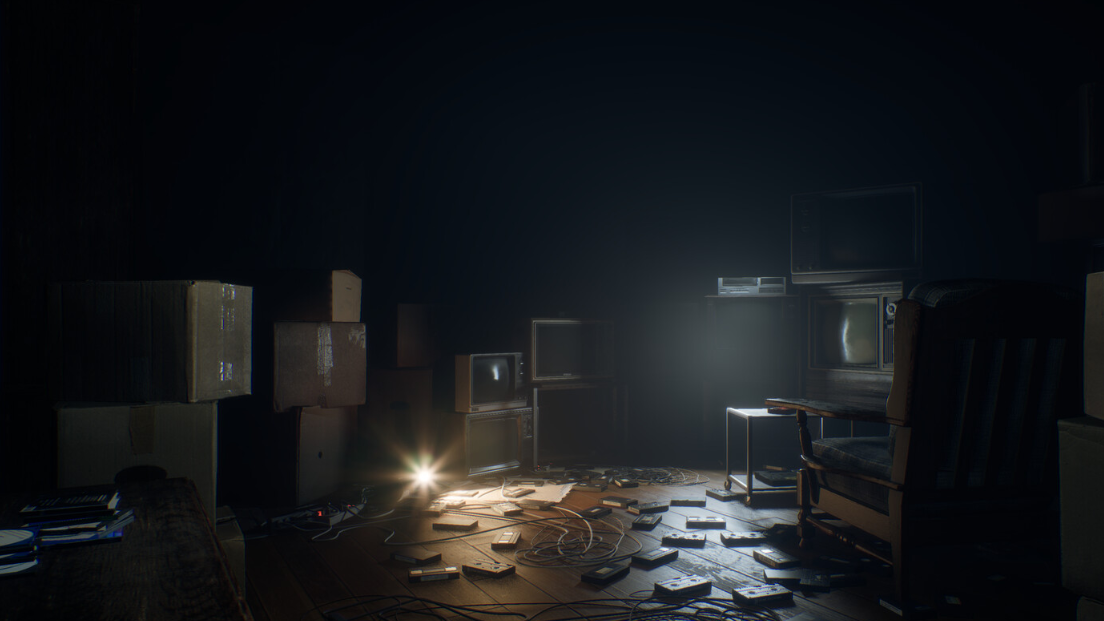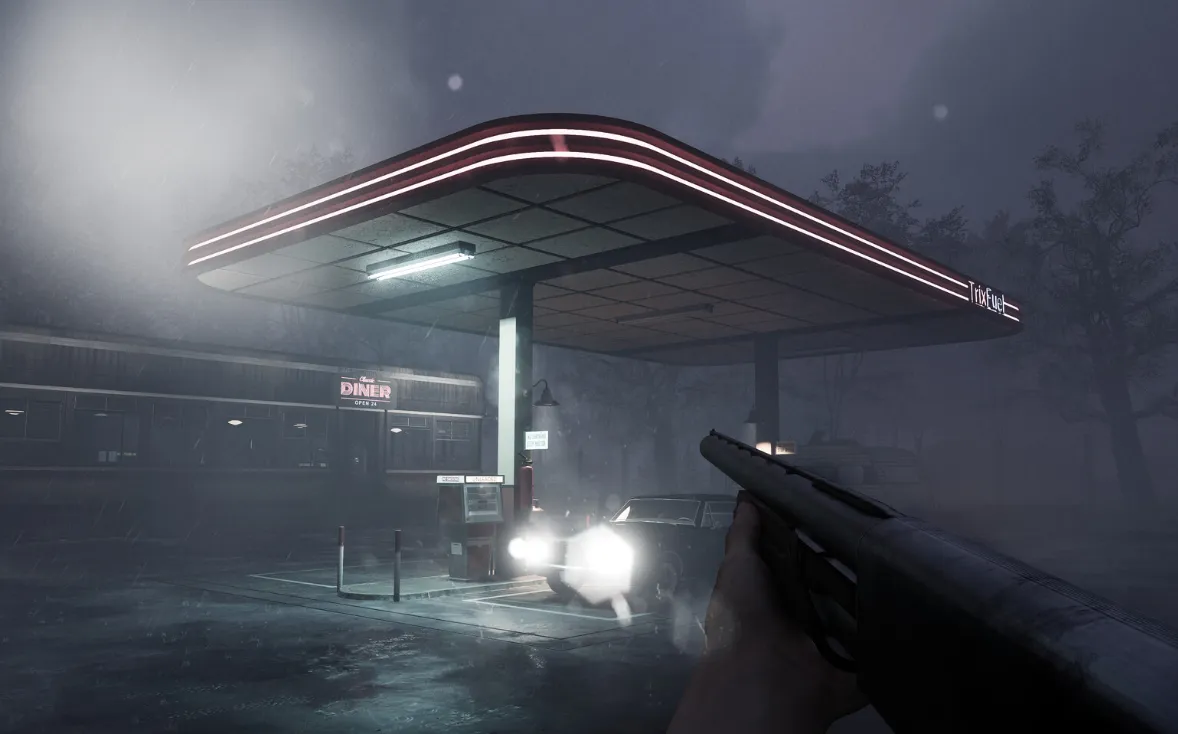After the first Impossible House experience in AILA, the next morning, inside Samuel’s apartment turns into a small electronics project. The game asks you to assemble a controller panel for his robot, using loose components and a benchtop device in the living room, then install the finished unit in the bedroom.
Morning setup and finding the delivery
The panel sequence begins the day after the initial VR test. You wake up, move around the apartment, grab coffee, and feed Jones the cat. Shortly after that, a delivery drone drops a package on the balcony.
| Step | Location | What to do |
|---|---|---|
| 1 | Balcony | Approach the delivery drone and pick up the box it has dropped. |
| 2 | Living room / dining area | Carry the box to the large white dining table surrounded by white chairs. |
| 3 | Dining table | Wait for the interaction prompt, open your inventory, select the Delivery Box, and use it to place the box on the table. |
The dining table is the workbench for Samuel’s hobby electronics, and that’s where the entire panel assembly takes place.

Collecting the electronic parts and tools
Once the Delivery Box is on the table, it opens itself and reveals the hardware you need for the controller.
| Item | Where it appears | Why you need it |
|---|---|---|
| Electronic Component #1 | Inside the open Delivery Box | One of three board-level parts that must be slotted on the panel’s motherboard. |
| Electronic Component #2 | Inside the open Delivery Box | Second component needed for the controller circuitry. |
| Electronic Component #3 | Inside the open Delivery Box | Third and final component for the board layout. |
| Screwdriver | On the table next to the box | Used to open the white device that houses the motherboard. |
| Robot Panel Card | On the table next to the box | Logic card that later plugs into the installed panel in the bedroom. |
Pick up all three Electronic Components from the box and add them to your inventory. Then grab the Screwdriver and the Robot Panel Card from the tabletop.
On the left side of the table, there is a white device with a built-in screen. This unit hides the bare motherboard you’ll use as a base for the components.
- Walk up to the white device and press F to interact.
- When the inventory opens, select the Screwdriver and choose Use.
That action opens the casing and exposes the board layout puzzle.
Controls for placing the components
With the device open, interacting again lets you start manipulating the three loose components. The game treats this as a spatial puzzle with simple keyboard and mouse controls.
| Control | Effect on components |
|---|---|
W / A / S / D |
Move the selected component across the motherboard surface. |
R |
Rotate the currently selected component. |
| Left-click | Place the current component in its present position and orientation. |
| Right-click | Cancel placement of the current piece and go back to picking another one. |
You can drop all three parts next to the board first if you like, then move them one by one until the shapes line up with the sockets.
Correct electronic panel layout
Each of the three components has a distinctive shape that matches a specific region on the motherboard:
| Component description | Correct position on motherboard | Orientation details |
|---|---|---|
| Longest component (narrow, elongated board) | Bottom edge of the motherboard | Laid horizontally along the lower side so it spans the full width of its slot. |
| SSD‑like component (flat module with edge connector) | Top section of the motherboard | Placed horizontally with its connector aligned on the left-hand side. |
| RAM‑shaped stick (slim rectangular piece) | Right-hand side of the motherboard | Oriented vertically, forming a column on the right edge of the board. |
Use W / A / S / D and R to move and rotate until each piece “snaps” cleanly into its slot. When every part is correctly placed, the device recognizes the completed configuration, and the electronic panel is treated as a finished item.
At this point, the game adds the assembled panel to your inventory as a single object, ready to be installed elsewhere in the apartment.
Installing the panel in the bedroom
With the electronics puzzle solved, the task shifts from the workbench to the sleeping area. You now need to physically mount the completed unit in Samuel’s bedroom.
- Leave the living room and walk back to the bedroom where you slept the previous night.
- Look along the wall opposite the bathroom door for a large, empty wall socket or recess sized for a panel.
- Interact with the socket to open your inventory, select the newly assembled panel, and use it to insert the unit into the opening.
The panel locks into place and becomes a permanent fixture in the bedroom, connecting Samuel’s homemade robot controller to the apartment’s infrastructure.
Robot Panel Card and the “routine programming card” error
Once the hardware is mounted, the last obvious step is to slide in the Robot Panel Card you picked up earlier from the dining table. When you try to do that, the system rejects the card with an explicit error message:
| Action | System response | What it means in-game |
|---|---|---|
| Attempt to insert the existing Robot Panel Card into the bedroom panel | Error stating the “routine programming card is older than the current hardware” and must be replaced with an updated card | The firmware on the card is outdated for the newly installed controller and cannot be used as-is. |
There is nothing to fix manually at this stage. After installing the panel and triggering the incompatibility message, your role in this sequence is effectively complete. The narrative picks up the thread later: the AILA system arranges for a new, updated Robot Panel Card to arrive the next morning, without requiring extra steps from you.
Story context and what comes next
The panel assembly is more than a one-off puzzle; it anchors the subplot in which Samuel has been quietly building a robot in his spare time as a personal project. The need for a new programming card also underlines how quickly the AILA hardware ecosystem is evolving around him.
From here, the story shifts back toward VR testing and the horror scenarios that follow, with the upgraded panel and future card delivery feeding into later sequences. If all three components are placed as described, the morning electronics interlude is fully resolved, and the game can move forward.


